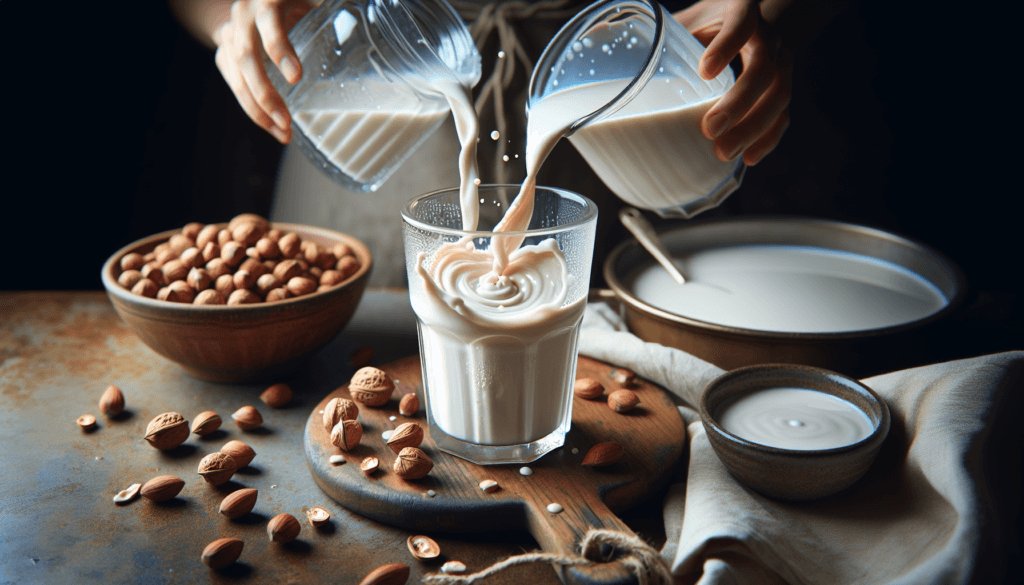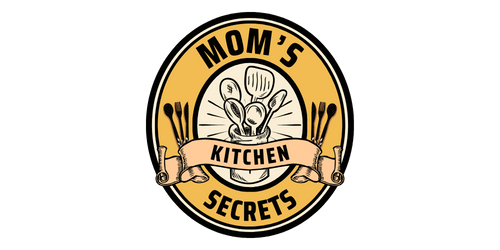Looking to add a healthy and delicious alternative to your everyday beverages? Look no further! In this article, you will learn all the steps on how to make homemade nut milk right in the comfort of your own home. Whether you’re lactose intolerant, vegan, or simply wanting to switch up your milk routine, this guide will provide you with all the necessary ingredients and easy-to-follow instructions to create your very own creamy and nutritious nut milk. Say goodbye to store-bought options and get ready to impress your taste buds with your homemade creation.

Choosing the Right Nuts
When it comes to making homemade nut milk, one of the first steps is to choose the right nuts for the job. There are a variety of nut options available, each with its own unique flavor and nutritional profile. Researching different nut options is essential in order to select the nuts that align with your preferences and dietary needs.
Research Different Nut Options
Do some research to explore the various nut options available for making nut milk. Almonds, cashews, walnuts, and macadamia nuts are some popular choices. Each type of nut has distinct characteristics that can impact the taste and consistency of your nut milk. Some nuts are naturally sweeter, while others have a more subtle flavor. Additionally, consider the nutritional benefits of each nut to ensure you are selecting the option that aligns with your dietary goals.
Consider Your Taste Preferences
When choosing nuts for nut milk, it’s important to take your taste preferences into account. Some nuts, like almonds and cashews, have a mild, slightly sweet flavor that pairs well with various recipes. If you prefer a richer and creamier taste, macadamia nuts or walnuts might be the perfect choice for you. Consider how you plan to use the nut milk and what flavor profiles would complement your dishes or beverages.
Take Allergies into Account
If you or anyone you plan to serve the nut milk to has allergies, it’s crucial to take that into account when selecting the nuts. Many people have nut allergies, and certain nuts can trigger severe reactions. If you or someone you know has a nut allergy, it’s best to avoid using that specific nut and opt for an alternative. Popular nut alternatives include oats, rice, and soy, which can also be used to make delicious and creamy plant-based milk.
Preparing the Nuts
To ensure the best flavor and texture for your homemade nut milk, it’s important to properly prepare the nuts before blending them.
Soak the Nuts Overnight
Soaking the nuts overnight is an essential step in the preparation process. Soaking helps soften the nuts, making them easier to blend and resulting in a smoother, creamier nut milk. Place the nuts in a bowl and cover them with water, allowing them to soak overnight or for at least 6-8 hours.

Drain and Rinse the Nuts
After soaking the nuts, it’s important to drain and rinse them thoroughly. This helps remove any residual phytic acid, which can interfere with the absorption of certain nutrients. Rinse the soaked nuts under cool running water until the water runs clear.
Remove Any Skins
Some nuts, like almonds, may have skins that can affect the texture and taste of the nut milk. To ensure a smoother consistency, it’s recommended to remove the skins before blending. You can easily remove almond skins by gently squeezing the nuts between your fingers.
Blending the Nut Milk
Once the nuts are properly prepared, it’s time to blend them into a creamy and delicious nut milk.
Measure the Nuts and Water Ratio
To achieve the desired consistency and flavor, it’s important to measure the nuts and water ratio accurately. The general rule of thumb is to use a ratio of 1 cup of nuts to 4 cups of water. However, you can adjust this ratio according to your preference, adding more or less water to achieve a thicker or thinner consistency.
Add Flavoring and Sweeteners (Optional)
While nut milk can be enjoyed in its pure form, you can also add flavoring and sweeteners to enhance the taste. Some popular options include vanilla extract, cinnamon, dates, or maple syrup. Experiment with different flavor combinations until you find your perfect blend.
Blend until Smooth
Place the soaked and rinsed nuts in a blender along with the desired amount of water, flavorings, and sweeteners. Blend on high speed until the mixture becomes smooth and creamy. This usually takes around 1-2 minutes, but the blending time may vary depending on the power of your blender.

Straining the Nut Milk
After blending the nuts and water, it’s time to strain the mixture to remove any pulp or solids.
Select the Right Straining Method
There are various methods for straining nut milk, but two common options are using a nut milk bag or a cheesecloth. Both methods are effective at separating the nut milk from the pulp, but the choice ultimately depends on personal preference and availability of tools.
Use a Nut Milk Bag
A nut milk bag is a fine mesh bag specifically designed for straining nut milk. It allows the liquid to pass through while retaining the solids. To strain the nut milk using a nut milk bag, simply pour the blended mixture into the bag over a large bowl or jug. Squeeze and twist the bag to extract all the liquid while leaving behind the pulp.
Use a Cheesecloth
If you don’t have a nut milk bag, you can use a cheesecloth as an alternative. Line a fine-mesh sieve with the cheesecloth and place it over a bowl or jug. Pour the blended mixture into the lined sieve and allow the liquid to strain through, gently pressing the pulp with a spoon to extract as much liquid as possible.
Storing and Using the Nut Milk
Once the nut milk is strained, it’s important to properly store it to maintain its freshness and quality.
Transfer the Nut Milk to a Container
Transfer the strained nut milk to a clean, airtight container. Glass jars or bottles with lids work well for storing nut milk, as they help preserve the flavor and prevent any odors from permeating the milk.

Store in the Refrigerator
To ensure the longevity of the nut milk, it should be stored in the refrigerator. The cold temperature helps slow down the growth of bacteria and maintains the freshness of the milk. Homemade nut milk typically stays fresh for about 3-4 days when stored in the refrigerator.
Use within a Few Days
It’s best to consume homemade nut milk within a few days of making it to enjoy its full flavor and freshness. Avoid storing it for too long, as the taste and texture can deteriorate over time. If you find that you have made more nut milk than you can consume within a few days, consider freezing it in ice cubes or small portions for future use.
Using Leftover Pulp
When straining nut milk, you are left with a nutrient-rich pulp that can be repurposed in various ways.
Make Nut Flour
To make the most of the leftover pulp, you can transform it into nut flour. Simply spread the pulp onto a baking sheet and allow it to dry completely. Once dry, blend the pulp in a food processor or blender until it reaches a fine, flour-like consistency. Nut flour can be used in baking recipes, adding a delicious and nutritious twist to your favorite treats.
Add to Baked Goods
The leftover pulp can also be added directly to baked goods, such as cookies, muffins, or granola bars. It adds texture, flavor, and an extra boost of nutrients to your creations. Experiment with different recipes to find the perfect use for your nut pulp.
Create Energy Balls or Bars
Another creative way to use the leftover pulp is by making energy balls or bars. Combine the pulp with ingredients such as dates, nuts, seeds, and sweeteners of your choice. Roll the mixture into bite-sized balls or press it into a baking dish to create bars. These energy-packed snacks are perfect for on-the-go or as a quick pick-me-up during the day.

Troubleshooting Tips
Sometimes, despite following the steps carefully, you may encounter a few issues with your nut milk. Here are some troubleshooting tips to help you overcome common problems.
If the Nut Milk Separates
If you notice your nut milk separating, with a layer of liquid on top and solids settling at the bottom, it’s typically due to a natural separation of the ingredients. Simply give the nut milk a good shake or stir before using it to recombine the liquid and solids.
If the Nut Milk Tastes Bitter
A bitter taste in nut milk can be caused by overblending the nuts or using nuts that have gone rancid. To avoid bitterness, be mindful of the blending time and ensure you are using fresh and high-quality nuts. If the bitterness persists, you may need to adjust the flavorings or sweeteners to balance out the taste.
If the Nut Milk is too Thin
If your nut milk turns out too thin or watery, you can adjust the consistency by adding fewer cups of water during the blending process. Gradually increase the amount of water until you achieve the desired thickness.
Health Benefits of Nut Milk
Nut milk offers a range of health benefits, making it a popular alternative to dairy milk for many people.
Nutritional Profile
Different nuts offer various nutritional benefits. For example, almond milk is a good source of vitamin E and healthy fats, while cashew milk is rich in copper and magnesium. Nut milk is typically low in calories, making it a suitable option for those watching their weight. Additionally, nut milk is free from lactose and cholesterol, making it a suitable choice for those with dietary restrictions or preferences.
Potential Allergen Alternatives
Nut milk provides a great alternative for individuals with allergies or intolerances to dairy products. By using nuts that are allergen-friendly, such as oats or rice, you can enjoy a creamy and flavorful plant-based milk without the worry of triggering an allergic reaction.
Dietary Benefits
Nut milk is a versatile and customizable option that can align with various dietary needs. It provides a plant-based source of protein, which is essential for muscle growth and repair. Furthermore, it is suitable for vegans and vegetarians, offering a dairy-free and cruelty-free option for obtaining essential nutrients.
Comparing Store-Bought vs Homemade Nut Milk
While store-bought nut milk is convenient, there are several advantages to making your own nut milk at home.
Added Ingredients and Preservatives
Store-bought nut milk often contains added ingredients and preservatives to enhance flavor, extend shelf life, or improve texture. By making your nut milk at home, you have full control over the ingredients, ensuring a pure and natural product without any unnecessary additives.
Cost Comparison
Homemade nut milk can be more cost-effective compared to store-bought options. Although the initial investment may include the purchase of nuts and a blender, the cost per serving of homemade nut milk is generally lower. Buying nuts in bulk and making larger batches can further reduce the cost.
Environmental Impact
Making your own nut milk at home can also have a positive environmental impact. It reduces the need for single-use packaging often associated with store-bought options. Additionally, making homemade nut milk allows you to support sustainable and eco-friendly practices by sourcing organic and locally grown nuts.
Expanding Your Nut Milk Repertoire
Once you’ve mastered the art of making homemade nut milk, it’s time to get creative and explore new flavors and uses.
Try Different Nut Combinations
Experiment with different combinations of nuts to create unique flavors and textures. For example, blending almonds with cashews can result in a creamier milk, while adding a handful of walnuts can lend a rich and nutty taste. The possibilities are endless, so don’t be afraid to mix and match your favorite nuts.
Experiment with Flavor Additions
In addition to different nut combinations, you can also experiment with flavor additions to your nut milk. Vanilla extract, cacao powder, or a hint of cinnamon can transform a simple nut milk into a gourmet treat. Don’t be afraid to get creative and think outside the box.
Make Nut-Based Creams and Yogurts
Nut milk can serve as a base for delicious and creamy plant-based creams and yogurts. By adding probiotics and thickening agents, you can create your own dairy-free yogurt. Similarly, blending soaked and strained nuts with a few additional ingredients can result in a rich and flavorful nut-based cream that can be used in desserts or as a substitute for dairy cream.
With these comprehensive instructions, you are well on your way to making your own homemade nut milk. Enjoy the process, get creative, and savor the benefits of this nutritious and delicious alternative to dairy milk. Cheers to your homemade nut milk success!


